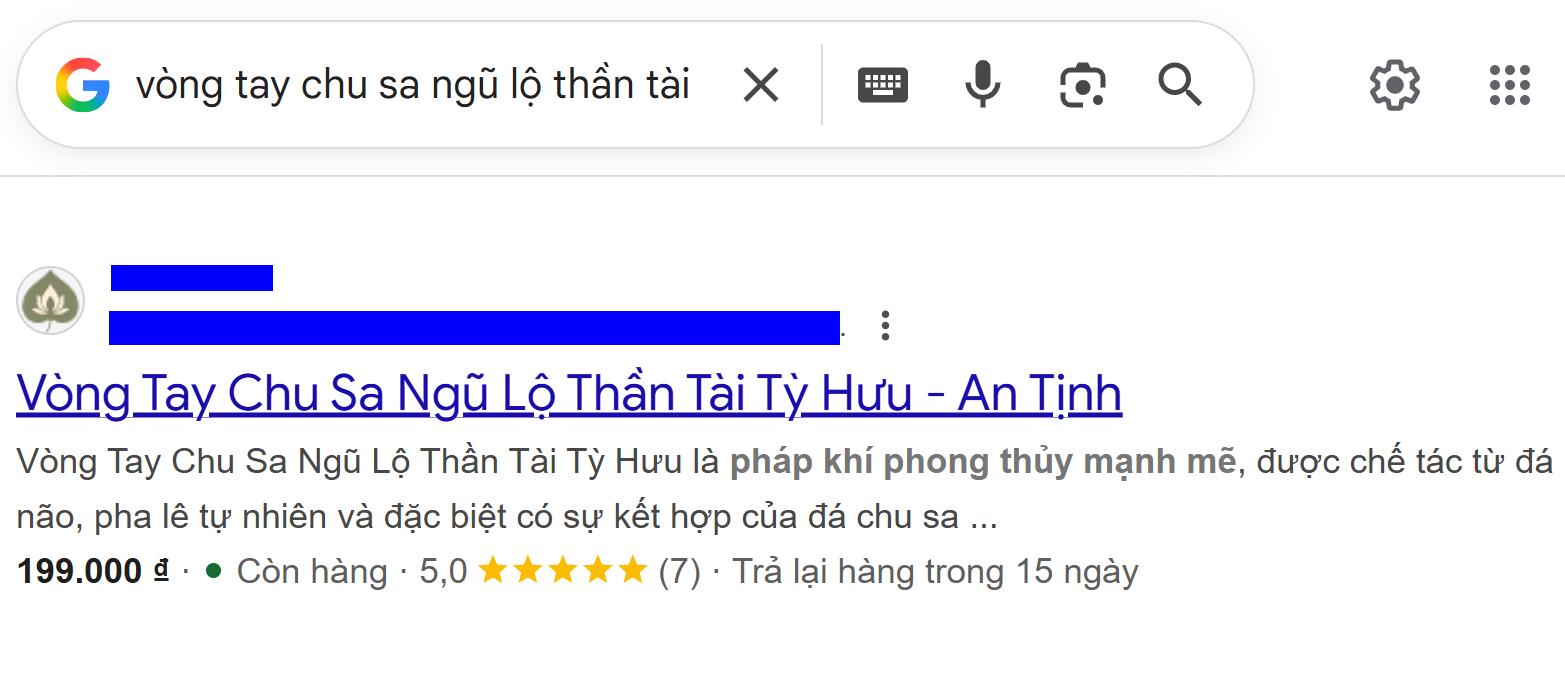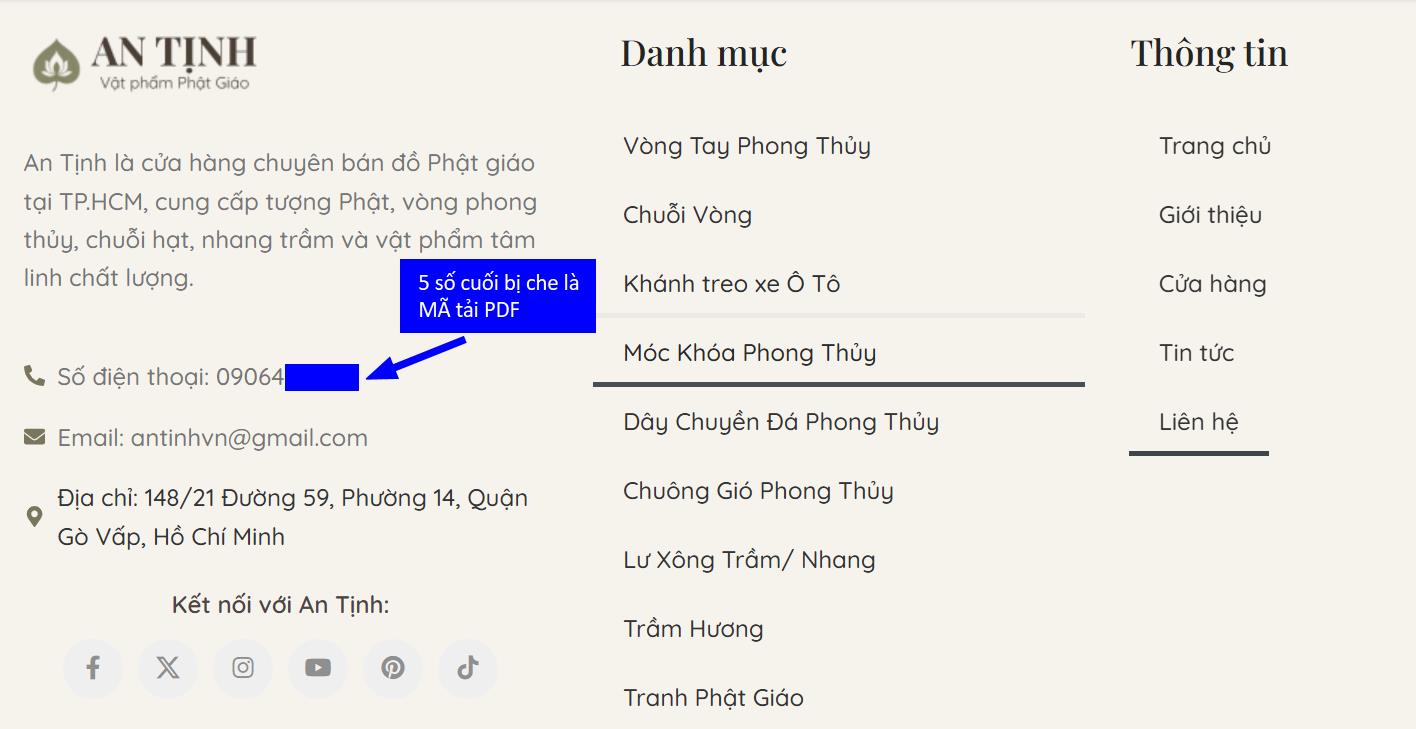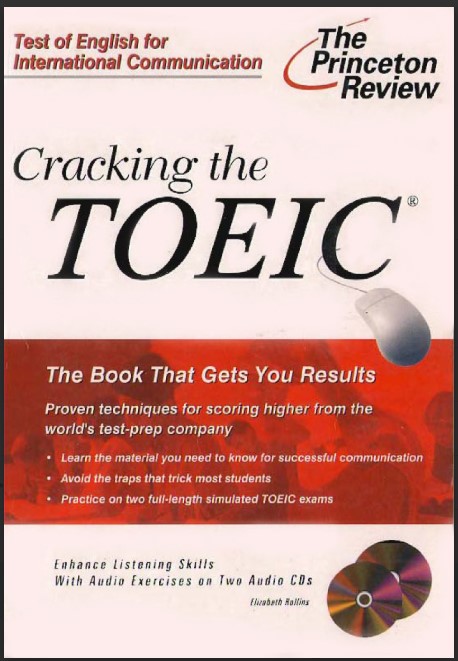
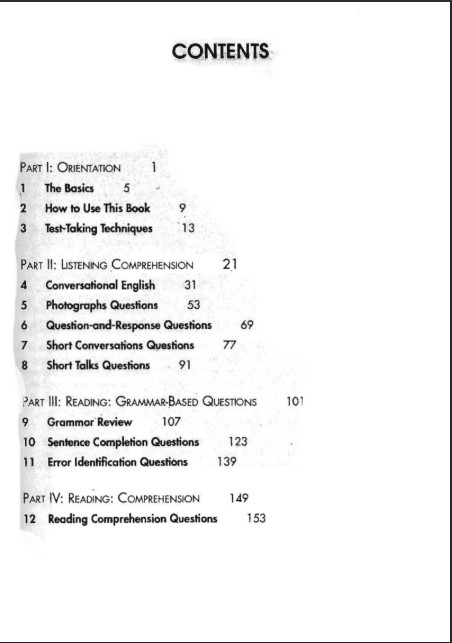
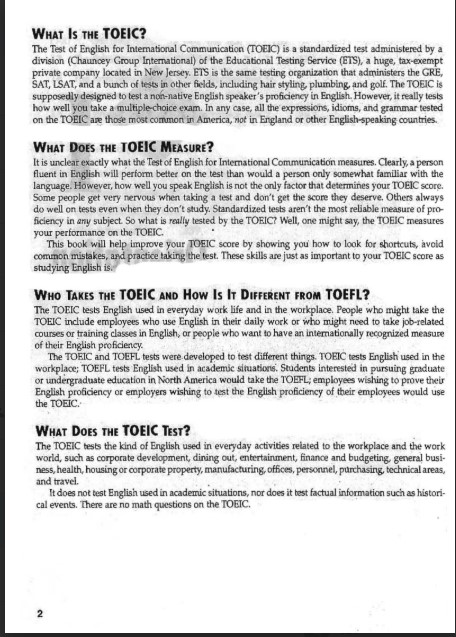
CONTENTS
PART I: ORIENTATION 1
1 The Basics 5
2 How to Use This Book 9
3 Test-Taking Techniques 13
PART II: LISTENING COMPREHENSION 21
4 Conversational English 31
5 Photographs Questions 53
6 Question-and-Response Questions 69
7 Short Conversations Questions 77
8 Short Talks Questions 91
PART III: READING: GRAMMAR-BASED QUESTIONS 101
9 Grammar Review 107
10 Sentence Completion Questions 123
11 Error Identification Questions 139
PART IV: READING: COMPREHENSION 149
12 Reading Comprehension Questions 153
PART V: GETTING READY TO TAKE THE TEST 167
13 The Princeton Review TOEIC Practice Test 1 173
14 The Princeton Review TOEIC Practice Test 1: Answers and Explanations 215
15 The Princeton Review TOEIC Practice Test 2 243
16 The Princeton Review TOEIC Practice Test 2: Answers and Explanations 285
17 How to Score Your Test 315
Appendix 1: Idiom List 319
Play List for Audio CDs 337
About the Author 339
WHAT IS THE TOEIC?
The Test of English for International Communication (TOEIC) is a standardized test administered by a division (Chauncey Group International) of the Educational Testing Service (ETS), a huge, tax-exempt private company located in New Jersey. ETS is the same testing organization that administers the GRE, SAT, LSAT, and a bunch of tests in other fields, including hair styling, plumbing, and golf. The TOEIC is supposedly designed to test a non-native English speaker’s proficiency in English. However, it really tests how well you take a multiple-choice exam. In any case, all the expressions, idioms, and grammar tested on the TOEIC are those most common in America, not in England or other English-speaking countries.
WHAT DOES THE TOEIC MEASURE?
It is unclear exactly what the Test of English for International Communication measures. Clearly, a person fluent in English will perform better on the test than would a person only somewhat familiar with the language. However, how well you speak English is not the only factor that determines your TOEIC score. Some people get very nervous when taking a test and don’t get the score they deserve. Others always do well on tests even when they don’t study. Standardized tests aren’t the most reliable proof of proficiency in any subject. So what is really tested by the TOEIC? Well, one might say, the TOEIC measures your performance on the test.
This book will help improve your TOEIC score by showing you how to look for shortcuts, avoid common mistakes, and practice taking the test. These skills are just as important to your TOEIC score as studying English is.
WHO TAKES THE TOEIC AND HOW IS IT DIFFERENT FROM TOEFL?
The TOEIC tests English used in everyday work life and in the workplace. People who might take the TOEIC include employees who use English in their daily work or who might need to take job-related courses or training classes in English, or people who want to have an internationally recognized measure of their English proficiency.
The TOEIC and TOEFL tests were developed to test different things. TOEIC tests English used in the workplace; TOEFL tests English used in academic situations. Students interested in pursuing graduate or undergraduate education in North America would take the TOEFL; employees wishing to prove their English proficiency or employers wishing to have their English proficiency of their employees would use the TOEIC.
WHAT DOES THE TOEIC TEST?
The TOEIC tests the kind of English used in everyday activities related to the workplace and the work world, such as corporate development, dining out, entertainment, finance and budgeting, general business, health, housing or corporate property, manufacturing, offices, personnel, purchasing, technical areas, and travel.
It does not test English used in academic situations, nor does it test factual information such as historical events. There are no math questions on the TOEIC.
HOW IMPORTANT IS THE TOEIC?
The importance of the TOEIC differs widely from employer to employer. Some employers use the TOEIC scores to determine advancement within the company. Still others use TOEIC scores to help determine job placement (employees with higher scores are put in positions that require more English). If you do not currently have a job, you may take the TOEIC in an “open administration.” Your prospective employer that you can speak English to a degree. If your score is not as high as you’d like it to be, however, you may want to retrain from putting it on your resume until you’ve worked through this book and taken the TOEIC again with an improved score.
HOW IS THE TOEIC STRUCTURED?
The TOEIC is a two-hour, multiple-choice test. There are two parts of the TOEIC, the Listening Comprehension section and the Reading section.
The Listening Comprehension section consists of 100 questions organized in four parts that lasts 45 minutes. There are four question types on the Listening Comprehension section:
- Part I: 20 photograph questions. You will see a photograph and be asked to choose the answer choice that describes what is happening in the photo. The answer choices will be read to you; they will not be printed in the test booklet.
- Part II: 30 question-and-response questions. You will hear a question and be asked to pick the correct response to the question. The question and answer choices will both be read but they will not be printed in the test booklet.
- Part III: 30 short conversation questions. You will hear a short conversation between two speakers. A question about the conversation and the answer choices will be printed in the test booklet.
- Part IV: 20 short talk questions. You will hear a short talk by one speaker. A question about the talk and the answer choices will be printed in the test booklet. There will be two to four questions about each talk.
The Reading section consists of 100 questions organized in three parts that lasts 75 minutes. There are three question types on the Reading section:
- Part V: 40 incomplete sentence questions. You will read a sentence with a missing word and four answer choices. You must pick the word that best fits the sentence.
- Part VI: 20 error identification questions. You will read a sentence with four underlined words or phrases. One of the words will be grammatically incorrect. You must find it.
- Part VII: 40 reading comprehension questions. You will read a passage (which can be any printed document, such as a fax, newspaper article, or memo). There will be at at question about the passage with four answer choices. There will be two to five questions about each passage.
As you can see, the Listening Comprehension section moves much more quickly than the Reading section. Since you will have to listen to spoken parts from a tape or CD on the Listening Comprehension section, you must keep up with the recording. On the Reading section, you may work at your own pace. There is no break between the sections of the test.
HOW IS THE TOEIC SCORED?
The TOEIC is scored by counting the number of correct answers marked on the answer sheet. ETS has a formula that converts the number of correct answers on each of the two main sections to a number on a scale of 5 to 495. The converted scores from the two sections are added together to get a final score, of 10 to 990.
WHEN DO I GET MY SCORES?
Your scores will be sent to your address several weeks after you take the test. ETS makes it clear that they will not be available any earlier. You will receive a score sheet which tells you how you scored on each of the two main sections of the test. You will also receive a certificate with your total score. Although your scores are confidential, ETS has the right to use them anonymously for any research or project it might concoct.
WHERE DO I TAKE THE TOEIC?
You will probably take the TOEIC at your place of employment or your language school. If you are not employed or will not take the TOEIC for your own reasons, you may take the test at an open administration. Many countries offer open administrations. To see if there are open administrations in your country, consult the official TOEIC website at www.toeic.com.
HOW DO I REGISTER FOR THE TOEIC EXAM?
Your employer may provide you with all the paperwork you need to register for the TOEIC, especially if the test is to be administered at your place of business. If this is not the case, you will need to contact the TOEIC representative for your country. A list of the official TOEIC representatives can be found at the TOEIC website at www.toeic.com.
WHAT IS THE PRINCETON REVIEW?
The Princeton Review is a test-preparation company based in New York City. We have branches in more

